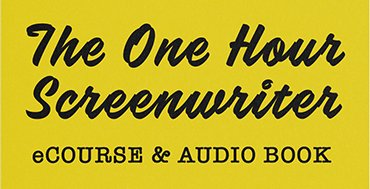#WritingAdviceWednesday – Working with a Writing Partner
Writing Advice Wednesday
Over the last few weeks, I’ve offered insight into how to receive feedback and how to give it. Now it’s time to look at another key dynamic- writing with others. Do you currently work with a writing partner? Have you ever considered doing so? Would you like to improve your chances of success as a team?
All successful creative teams share three basic characteristics. When any one of these characteristics is missing, it becomes more difficult to produce high- quality, original work on schedule. When writers fall behind, the whole television production process suffers and it becomes harder and harder for the writers to catch up. Here are the key characteristics of a highly productive creative team:
1. Team members trust one another.
The writers create a safe place to experiment and fail.
Creativity demands a very high tolerance for failure. The definition of creativity is original ideas that break new ground. If writers don’t encourage each other to take risks, then it’s impossible to create a script that feels fresh and new. Writers who don’t build trust between each other also fear being open and honest about their creative strengths and weaknesses. They are reluctant to ask for help or to offer it to their partner. When collaboration doesn’t feel safe, each writer shuts down personally and imaginatively.
2. Team members engage in unfiltered conflict around ideas.
Both writers direct the debate toward improving the work.
Writers must be able to engage in passionate open debate around creative ideas. This clash of ideas must always be about the work. Conflict in the partnership must never become personal. In a healthy creative team the best idea wins, regardless of its source. When conflict isn’t professional, creative debates can become individual disputes. Writers who are competitive rather than collaborative don’t elevate the team effort. Personal pride and jealousy always hinders and compromises a team’s creativity.
3. Team members focus on the achievements of the team and not individual contributions.
A good partnership is committed and helps both partners succeed.
Both members of the team must feel as if they are integral to the creative effort. Each writer must understand the expectations of the other. Work assignments and the division of labor must be reasonable and delineated clearly.
Each writer must take responsibility for his or her deadlines and be honest, accountable and communicative with the other. Each writer must be able to ask for and give help. Both writers must be committed to helping the team succeed.
Negativity, backbiting and jockeying for position is unprofessional and sabotages a creative atmosphere. Selfishness, irresponsibility, and lack of generosity destroy team effort. Unspoken expectations lead to feelings of betrayal when those expectations aren’t met. Lack of candor and clarity always results in frustration and disappointment.
All successful partnerships are built on generosity, responsibility and open, honest communication. Each partner brings a distinct set of gifts to the relationship that together forms a greater whole than what could be achieved separately. Both partners rise above personal competitiveness and become true collaborators. If you keep track of who wrote what, your partnership can never be truly successful.
Hopefully, the past 3 articles have given you some useful insight into the area of writing not enough people talk about- the collaborative aspect creativity, whether it is in a writer’s room, with a partner, or with executives. These are useful lessons to learn for those of you starting out, and reminders for those of us who are more established. Never forget the importance of clear honest communication.
If you want to catch up on the last two articles, or writing advice in general, you can check out the Writing Advice Wednesdays archive.
SaveSave




Create a visual map for a character’s emotional journey. Pull stories from character rather from rote story structure beats. Some of the largest international media companies, use this in story and character development.


A clear concise guide for writers and producers to have by their side as they embark on a project. It gives a really vital reminder of what is key for story success.



No comment yet, add your voice below!